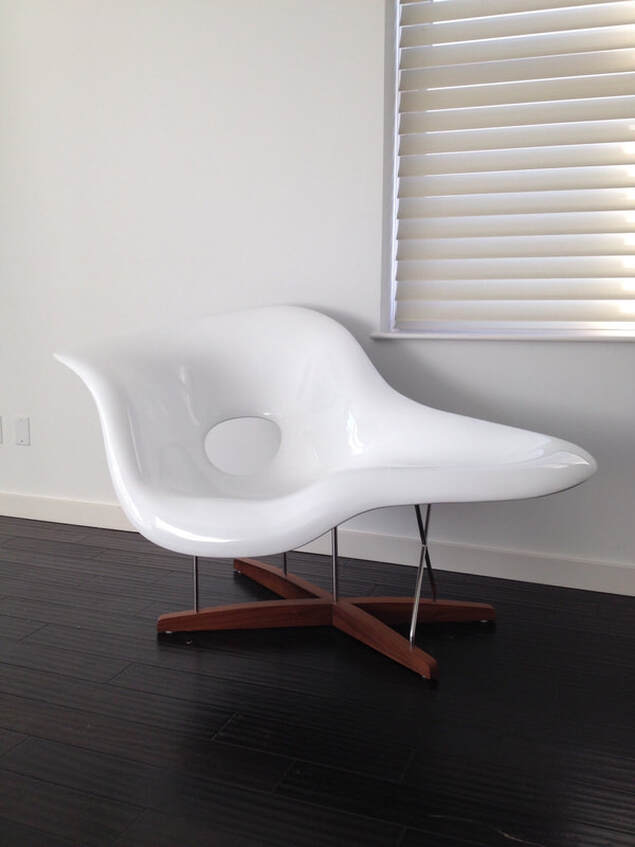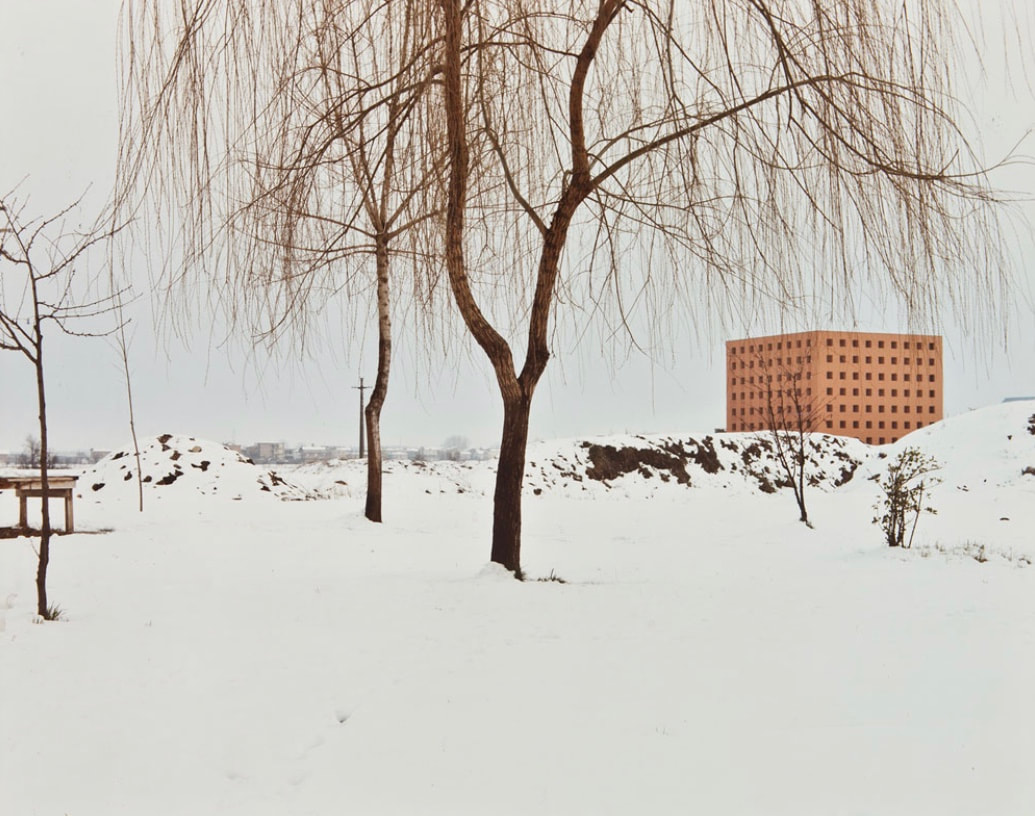In this website page a non-comprehensive list of the artists whose artworks have entered the collection is presented. The listed artists are those with whom we have had interactions either by correspondence or by meeting them personally, whenever possible. Our attempt has been to select a limited group of artists and to collect more works from each of them, supported by the view that collecting more works from each artist would have been the key to a better understanding of the artist's messages and beliefs.
In the brief notes reported below we wish to present our personal interpretation of the artists' work. We feel that the collector's reaction in front of an artwork is an unique and gratifying experience. At the same time, it may be very personal and related to different factors, some of them potentially linked to the collector's own background. We do apologise with the artists in the case our understanding of their artwork does not necessarily represent the artist's view.
In the brief notes reported below we wish to present our personal interpretation of the artists' work. We feel that the collector's reaction in front of an artwork is an unique and gratifying experience. At the same time, it may be very personal and related to different factors, some of them potentially linked to the collector's own background. We do apologise with the artists in the case our understanding of their artwork does not necessarily represent the artist's view.
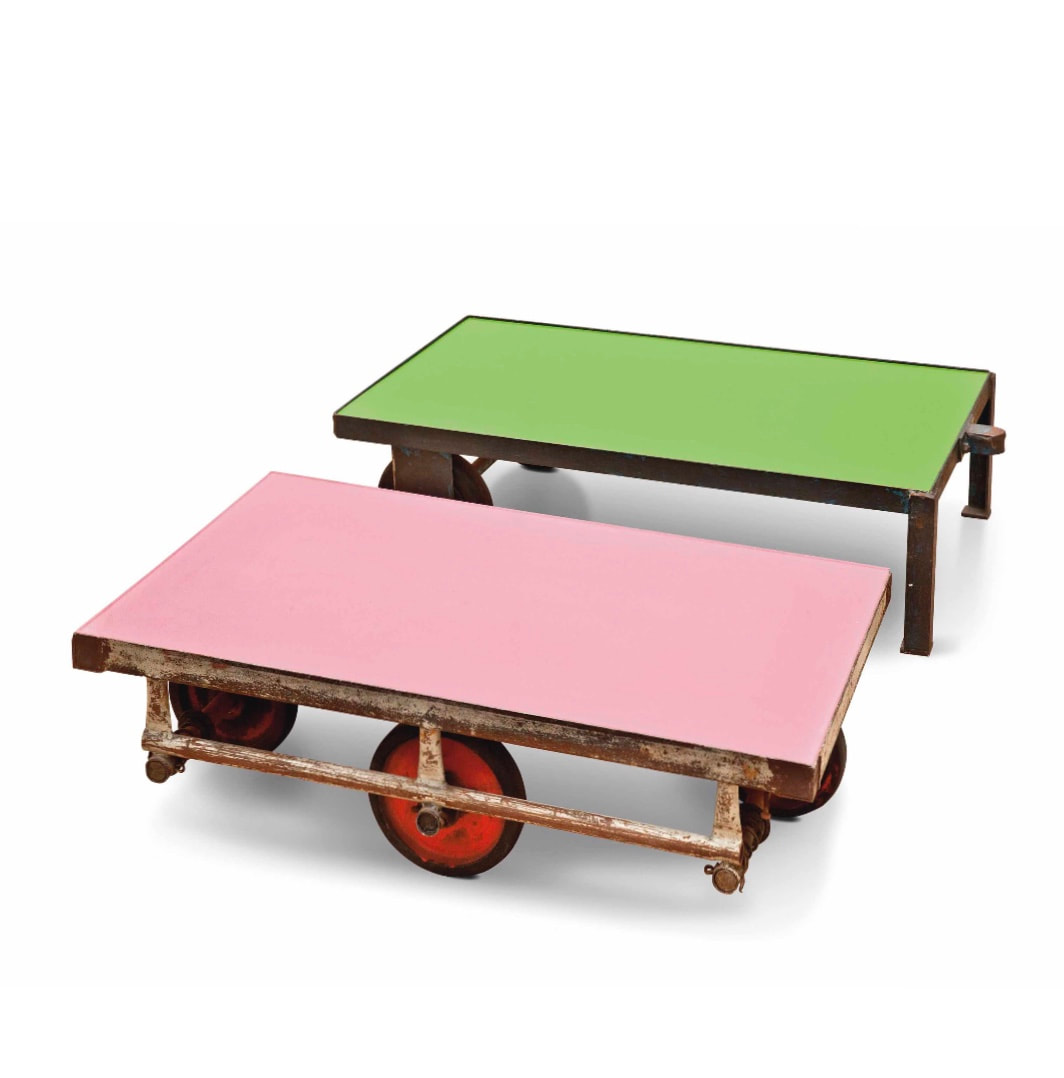
David Batchelor
(Scottish, born in 1955)
David Batchelor's work turns around the theme of colors. Noteworthy, his monochromes are not inspired by natural landscapes, but mostly by the colors that we may see in metropolitan areas where nowadays most of us live. His "city monochromes" may recall the colors of detergent plastic bottles seen in supermarket shelves or of billboards found at any street corner. While the contrast between those monochromes evoking a universal sense of beauty and Batchelor's "city monochromes" may potentially emphasize a radical change of our living environments, there is still a unique and gloomy sense of poetry in thinking to us, who, while rushing through our own everyday life, still have a moment to pause, even if for a short time, to be surprised by a city color....
(Scottish, born in 1955)
David Batchelor's work turns around the theme of colors. Noteworthy, his monochromes are not inspired by natural landscapes, but mostly by the colors that we may see in metropolitan areas where nowadays most of us live. His "city monochromes" may recall the colors of detergent plastic bottles seen in supermarket shelves or of billboards found at any street corner. While the contrast between those monochromes evoking a universal sense of beauty and Batchelor's "city monochromes" may potentially emphasize a radical change of our living environments, there is still a unique and gloomy sense of poetry in thinking to us, who, while rushing through our own everyday life, still have a moment to pause, even if for a short time, to be surprised by a city color....
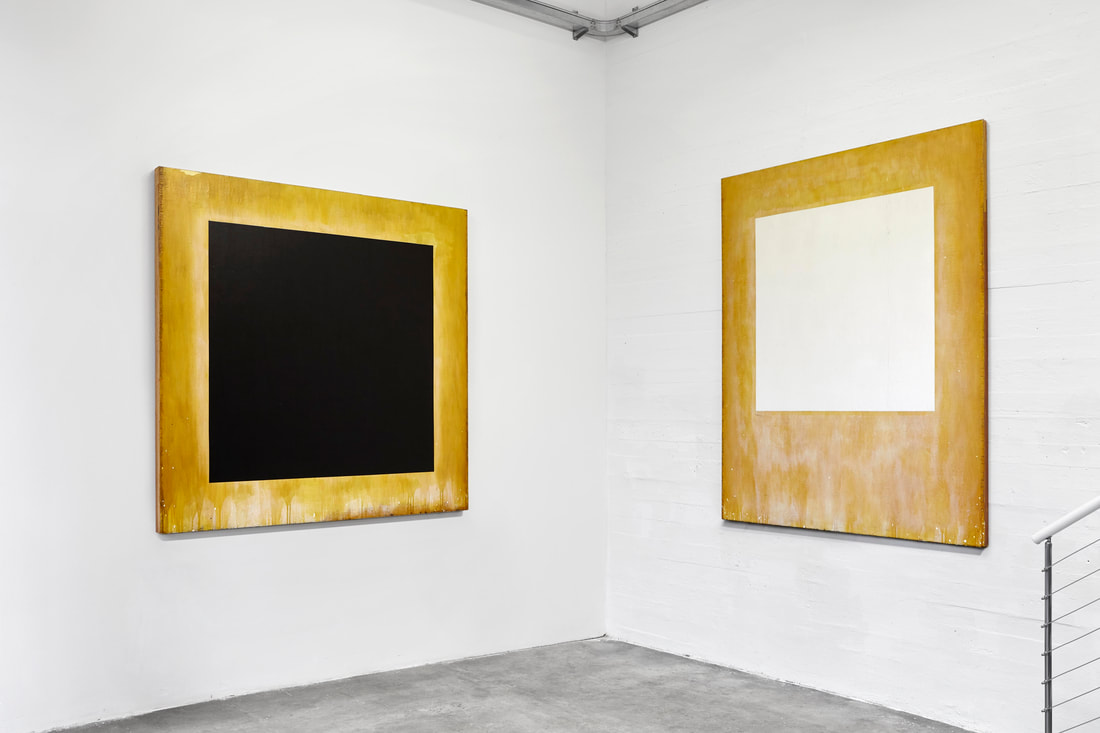
Ford Beckman
(American, 1952-2014)
The well known "Wall Paintings", conceived mainly during his first five/eight years of activity, may be considered as iconic images enhancing meditation and introspectiveness. The black or white squares, usually characterizing the central part of his "Wall Paintings" , may recall the human feeling of uncertainty about the theme of life and the after-life, as well as the pure happiness of certain moments of each individual's own life. We think that Ford Beckman' s "Wall paintings" would fit extremely well in the context of a laic place where inspiration and good feelings could happen.
(American, 1952-2014)
The well known "Wall Paintings", conceived mainly during his first five/eight years of activity, may be considered as iconic images enhancing meditation and introspectiveness. The black or white squares, usually characterizing the central part of his "Wall Paintings" , may recall the human feeling of uncertainty about the theme of life and the after-life, as well as the pure happiness of certain moments of each individual's own life. We think that Ford Beckman' s "Wall paintings" would fit extremely well in the context of a laic place where inspiration and good feelings could happen.
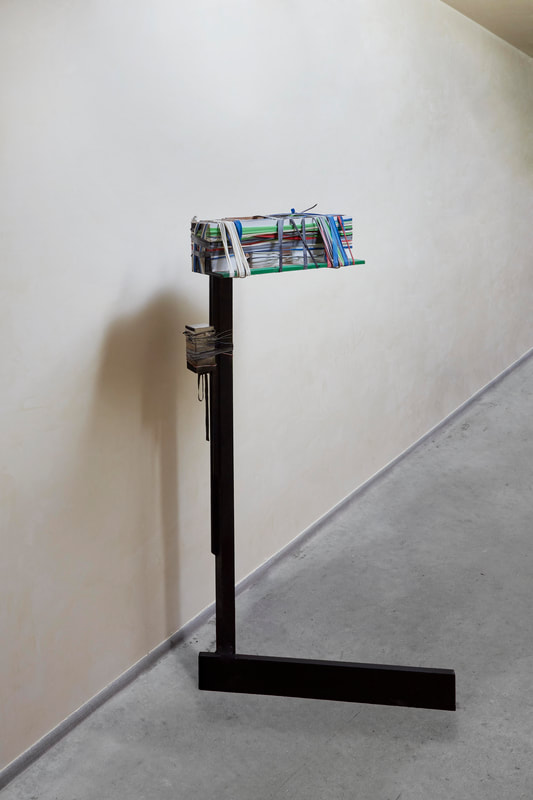
Ludovica Carbotta
(Italian, born in 1982)
Ludovica's work turns around a thoughtful and surreal research about human beings and their living conditions in metropolitan areas. Her sculptures evoke the human presence, which eventually is not manifestly displayed. Our observation of her work has prompted us to reflect about our living behaviours and how these may impact on the shape of the cities of the future. We derive a landscape where human beings live alone in crowded cities, attempting with irony and poetry to achieve the best profitable interaction with their metropolitan environment.
(Italian, born in 1982)
Ludovica's work turns around a thoughtful and surreal research about human beings and their living conditions in metropolitan areas. Her sculptures evoke the human presence, which eventually is not manifestly displayed. Our observation of her work has prompted us to reflect about our living behaviours and how these may impact on the shape of the cities of the future. We derive a landscape where human beings live alone in crowded cities, attempting with irony and poetry to achieve the best profitable interaction with their metropolitan environment.
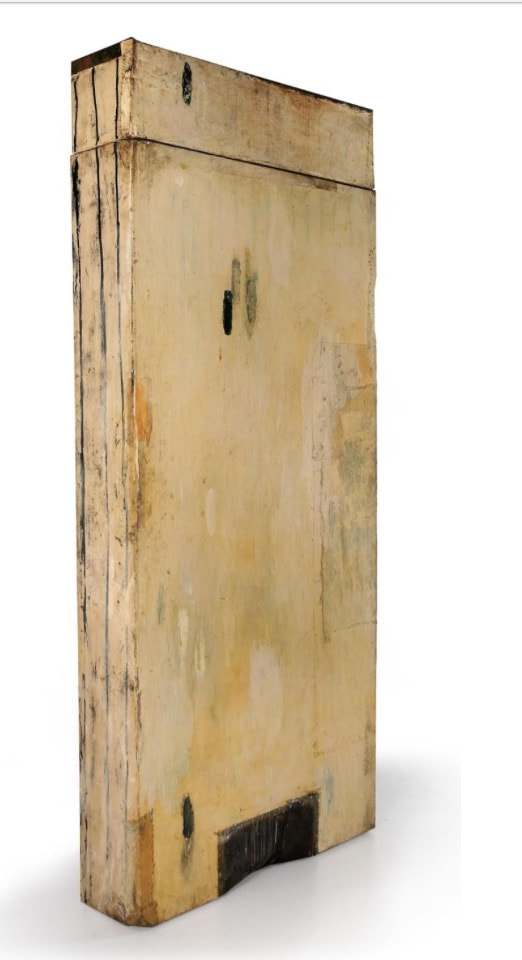
Lawrence Carroll
(American, 1954-2019)
We have always loved the "objects" created by Lawrence Carroll, they are in between paintings and sculptures, and, more importantly, they represent an unique example of hidden beauty.
In the attempt to have a better understanding of Lawrence's work we usually remember one of his early statements dated 1985, " It is not about the survival of materials. It is about the survival of their meaning."
Lawrence Carroll's work has to be approached quietly. The discovery of each piece happens slowly, and it seems to be endless. It is an unique and highly gratifying experience.
(American, 1954-2019)
We have always loved the "objects" created by Lawrence Carroll, they are in between paintings and sculptures, and, more importantly, they represent an unique example of hidden beauty.
In the attempt to have a better understanding of Lawrence's work we usually remember one of his early statements dated 1985, " It is not about the survival of materials. It is about the survival of their meaning."
Lawrence Carroll's work has to be approached quietly. The discovery of each piece happens slowly, and it seems to be endless. It is an unique and highly gratifying experience.
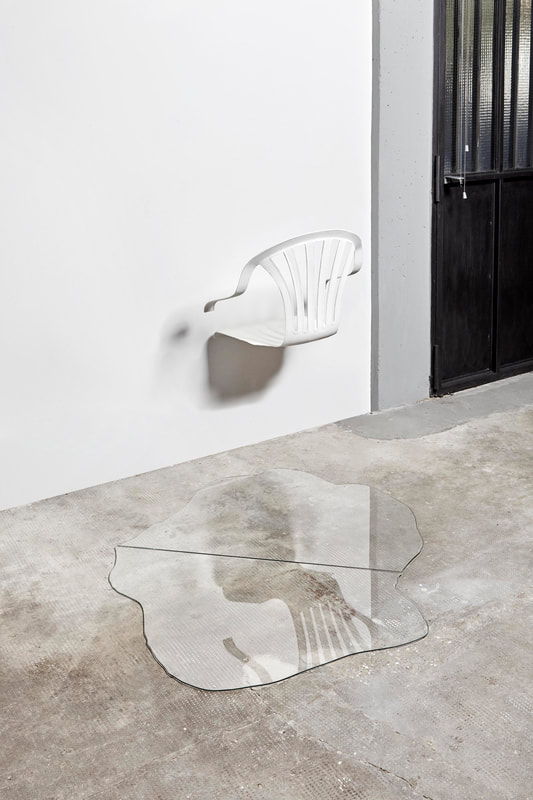
Giulia Cenci
(Italian, born in 1988)
Giulia lives in Amsterdam but we feel that her work is deeply rooted in Italy, and, more specifically, in a beautiful corner of south-Tuscany, where she usually spends part of her time. We think that from this "magic place" she derives a sense of fullness. A few years ago, when we started approaching her work, we were impressed by the reading of an interview where Giulia was elaborating on a little puddle playing with the moon-light after a rainfall. Her skills in reanimating abandoned materials, instilling a new life in them, may lead a passionate and sensible observer to discover a peculiar form of unconventional beauty.
(Italian, born in 1988)
Giulia lives in Amsterdam but we feel that her work is deeply rooted in Italy, and, more specifically, in a beautiful corner of south-Tuscany, where she usually spends part of her time. We think that from this "magic place" she derives a sense of fullness. A few years ago, when we started approaching her work, we were impressed by the reading of an interview where Giulia was elaborating on a little puddle playing with the moon-light after a rainfall. Her skills in reanimating abandoned materials, instilling a new life in them, may lead a passionate and sensible observer to discover a peculiar form of unconventional beauty.
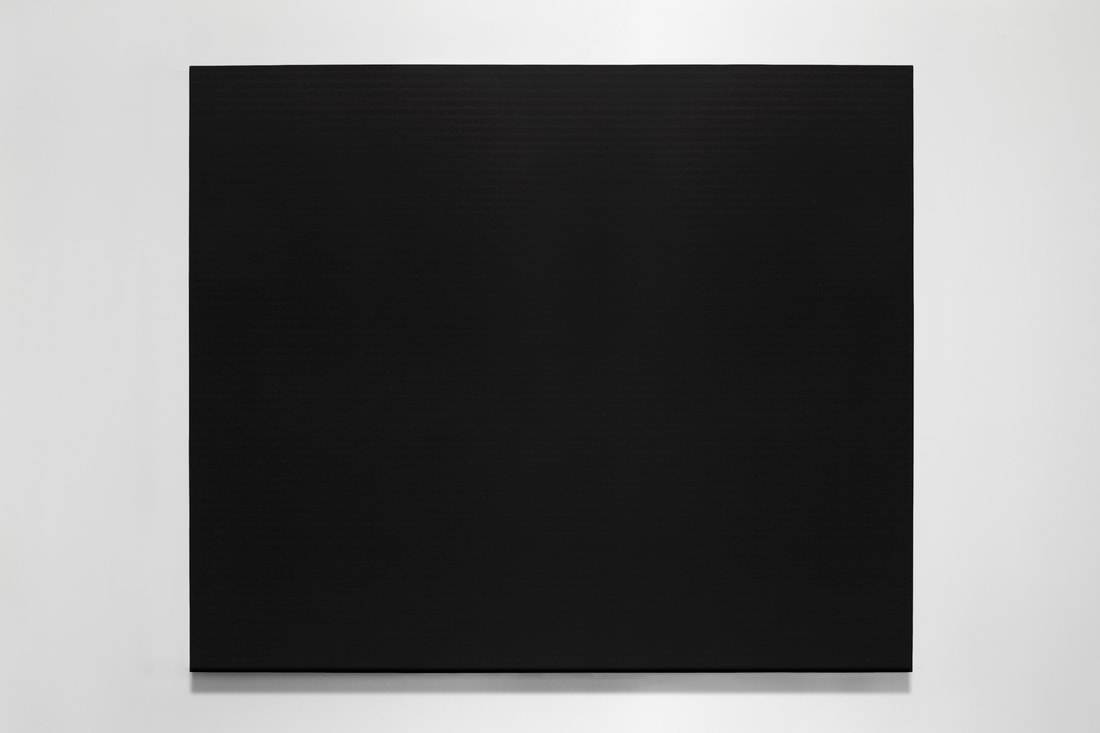
Max Cole
(American, born in 1937)
Max Cole's work has been fully consistent since the beginning of her artistic development. The artist has tirelessly created paintings reproducing a recognizable structure made of elementary vertical and horizontal lines. Her paintings do not grant relevance to immediately perceptible forms of beauty, they may lack of colors and they may be seen as quite repetitive in their composition.
In reality, eyes training and total openness to new languages may lead a passionate observer to discover in Max Cole's paintings a new dimension, where a deep and timeless silence meets with the human presence, wittnessed by the repetitive artist's drawing of elementary lines. Eventually, Max Cole's paintings, as the artist says, "become ritualistic, they're a bit like a prayer or a rosary or eastern meditation", and they may lead us to have a better harmony with the world and with ourselves.
(American, born in 1937)
Max Cole's work has been fully consistent since the beginning of her artistic development. The artist has tirelessly created paintings reproducing a recognizable structure made of elementary vertical and horizontal lines. Her paintings do not grant relevance to immediately perceptible forms of beauty, they may lack of colors and they may be seen as quite repetitive in their composition.
In reality, eyes training and total openness to new languages may lead a passionate observer to discover in Max Cole's paintings a new dimension, where a deep and timeless silence meets with the human presence, wittnessed by the repetitive artist's drawing of elementary lines. Eventually, Max Cole's paintings, as the artist says, "become ritualistic, they're a bit like a prayer or a rosary or eastern meditation", and they may lead us to have a better harmony with the world and with ourselves.
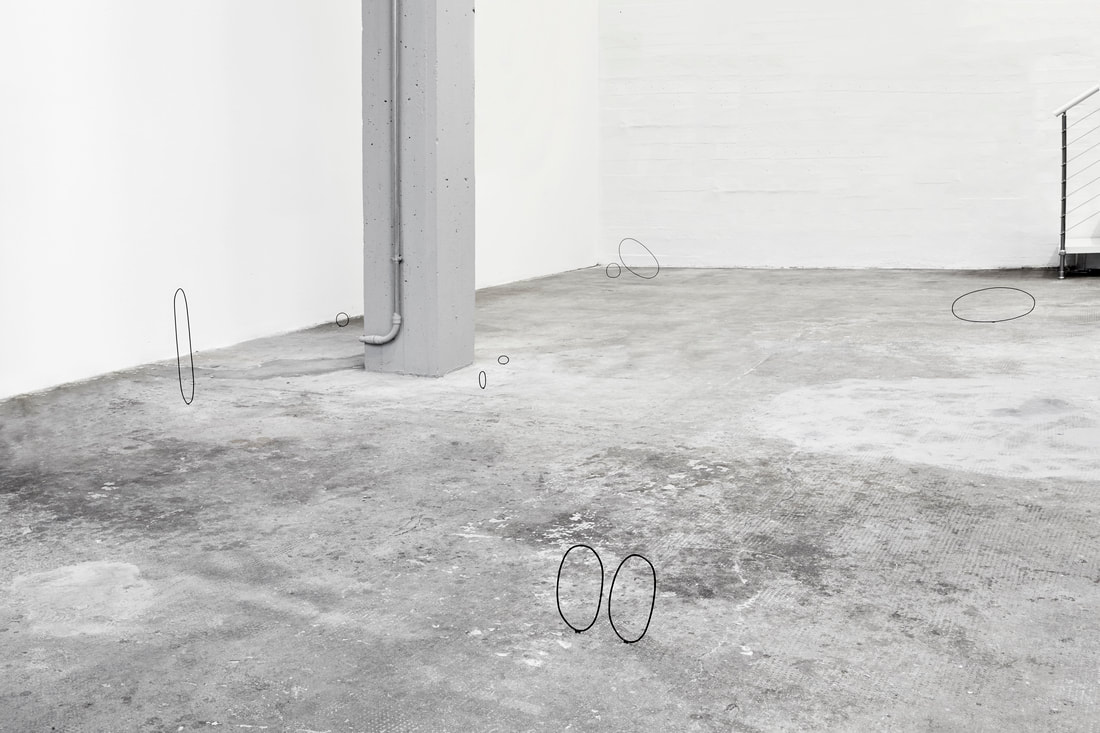
Ode de Kort
(Belgian, born in 1992)
Ode de Kort's work is a marvelous example of putting photography and sculpture in a dense and surprising dialogue. In her work, purity and rigor in shapes, which may derive from a long-standing Northern-Europe tradition, merge marveously with a boundless source of irony and happiness, the latter potentially reflecting Ode's own character and approach to life. Our reaction when in front of Ode de Kort's work is that supporting the work of young artists may be highly gratifying because of their unique skills to create new languages, whose impact may go far beyond the artistic field.
(Belgian, born in 1992)
Ode de Kort's work is a marvelous example of putting photography and sculpture in a dense and surprising dialogue. In her work, purity and rigor in shapes, which may derive from a long-standing Northern-Europe tradition, merge marveously with a boundless source of irony and happiness, the latter potentially reflecting Ode's own character and approach to life. Our reaction when in front of Ode de Kort's work is that supporting the work of young artists may be highly gratifying because of their unique skills to create new languages, whose impact may go far beyond the artistic field.
Luigi Ghirri
(Italian, 1943-1992)
(Italian, 1943-1992)
In the attempt to understand the work of Luigi Ghirri, it may be helpful to remember one of his statements about
photography, dated 1989:
" Photography represents less and less a fact-finding process....offering solutions, it remains a language to ask questions about the world. Myself, with my own history, I have travelled exactly along this itinerary, interacting continuously with the external world, convinced that solutions to questions were never achievable, but with the intent to raise more questions. Indeed, this way of behaving seems to me itself a sort of solution".
photography, dated 1989:
" Photography represents less and less a fact-finding process....offering solutions, it remains a language to ask questions about the world. Myself, with my own history, I have travelled exactly along this itinerary, interacting continuously with the external world, convinced that solutions to questions were never achievable, but with the intent to raise more questions. Indeed, this way of behaving seems to me itself a sort of solution".
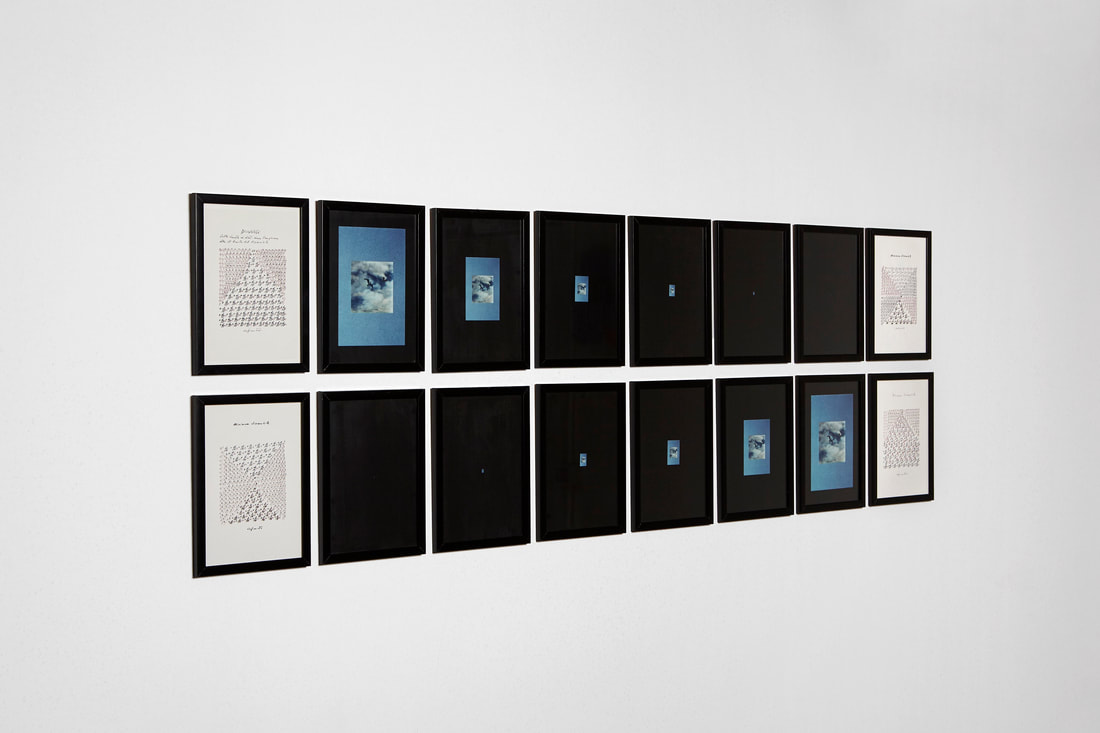
Laura Grisi
(Italian, 1939-2017)
Laura Grisi's work elegantly deals with the subtle border between the concepts of limited and unlimited. It is remarkable to observe how events that seem to have a specific duration may in reality be endless and that we may tend to define them as limited only because of our perceptive imperfections. The unlimited divisibility of a space, or of a number, are apparently "cold-hearted" examples of a borderless separation between limited and unlimited. Laura Grisi's work, with its conceptual roots, brings to our eyes the existence of a delicate and charming equilibrium between poetry and logic, dreams and reality, and eventually it may offer an alternative key to our vision of human life.
(Italian, 1939-2017)
Laura Grisi's work elegantly deals with the subtle border between the concepts of limited and unlimited. It is remarkable to observe how events that seem to have a specific duration may in reality be endless and that we may tend to define them as limited only because of our perceptive imperfections. The unlimited divisibility of a space, or of a number, are apparently "cold-hearted" examples of a borderless separation between limited and unlimited. Laura Grisi's work, with its conceptual roots, brings to our eyes the existence of a delicate and charming equilibrium between poetry and logic, dreams and reality, and eventually it may offer an alternative key to our vision of human life.
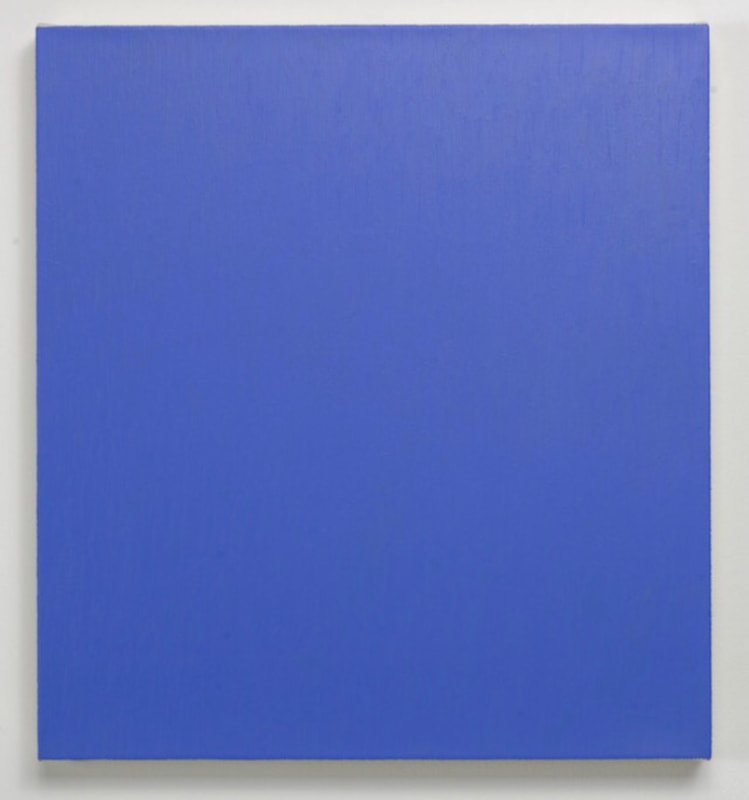
Marcia Hafif
(American, 1929-2018)
Marcia Hafif’s work has a relevant approach to colors and to its interactions with light and with surrounding environments. Her monochrome paintings are full of poetry and they may evoke surreal landscapes connected to a deep sense of infinity. By a careful inspection of the paintings' surface, it is possible to detect the presence of Marcia's hand, wittnessed by subtle brush strokes. Of note, paintings do not aim to reproduce any image or create an illusion. Lines and touches wish to exist as they are, without any attempt to generate a space or a shape. Some of Marcia Hafif's monochromes are characterized by layers of pure colors, while in other pieces the artist creates unique tints recalling the colors of the Fresco paintings she admired in Pompeii during the first years of her career. Marcia Hafif drawings, particularly those created from 1972 for about a decade, have been considered as "meditations on the artlessness of art, attempts at creating without forcing oneself to create, and arriving at a meaning without having looked for one".
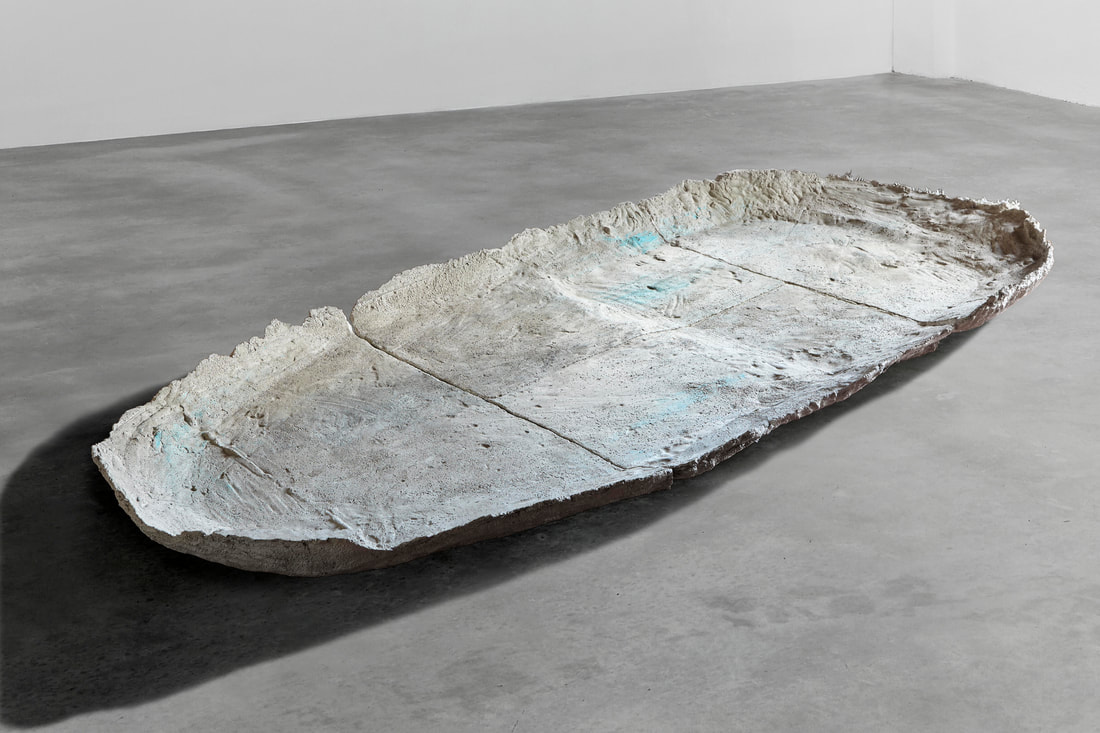
Esther Kläs
(German, born in 1981)
The works which have entered the collection may either recall the shape of the human body or may display subtle traces of the human presence such as the artist's fingerprints. These are sculptures inspired by an elementary, almost primitive, form of beauty, which has to be discovered slowly. It occurs frequently that we receive questions about the sense of
Kläs 's sculptures presented in the collection. We believe that understanding the meaning of Esther's sculptures is not key. The approach to her work should be sensorial; it may just require a sensitive eye and a total openness to new languages.
(German, born in 1981)
The works which have entered the collection may either recall the shape of the human body or may display subtle traces of the human presence such as the artist's fingerprints. These are sculptures inspired by an elementary, almost primitive, form of beauty, which has to be discovered slowly. It occurs frequently that we receive questions about the sense of
Kläs 's sculptures presented in the collection. We believe that understanding the meaning of Esther's sculptures is not key. The approach to her work should be sensorial; it may just require a sensitive eye and a total openness to new languages.
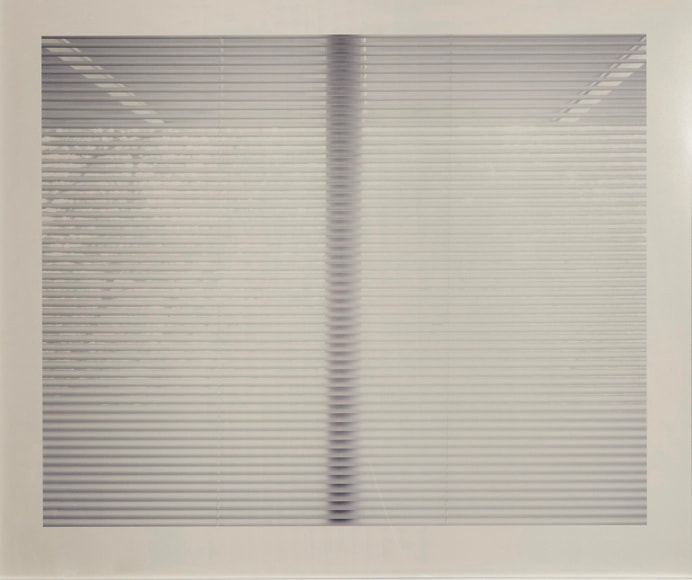
Luisa Lambri
(Italian, born in 1969)
Luisa Lambri's photographs are well known for mostly reproducing images of house interiors conceived by acclaimed architects. However, the artist has frequently highlighted the concept that in her case architecture is only a tool to look inside herself, like if she would stand in front of a mirror. Then, Luisa Lambri's work becomes a sort of artist's portrait evoking introspectiveness. With this artist's belief in mind we have approached her work and indeed we have discovered a completely alternative and gratifying manner to look at Luisa Lambri's photography.
(Italian, born in 1969)
Luisa Lambri's photographs are well known for mostly reproducing images of house interiors conceived by acclaimed architects. However, the artist has frequently highlighted the concept that in her case architecture is only a tool to look inside herself, like if she would stand in front of a mirror. Then, Luisa Lambri's work becomes a sort of artist's portrait evoking introspectiveness. With this artist's belief in mind we have approached her work and indeed we have discovered a completely alternative and gratifying manner to look at Luisa Lambri's photography.
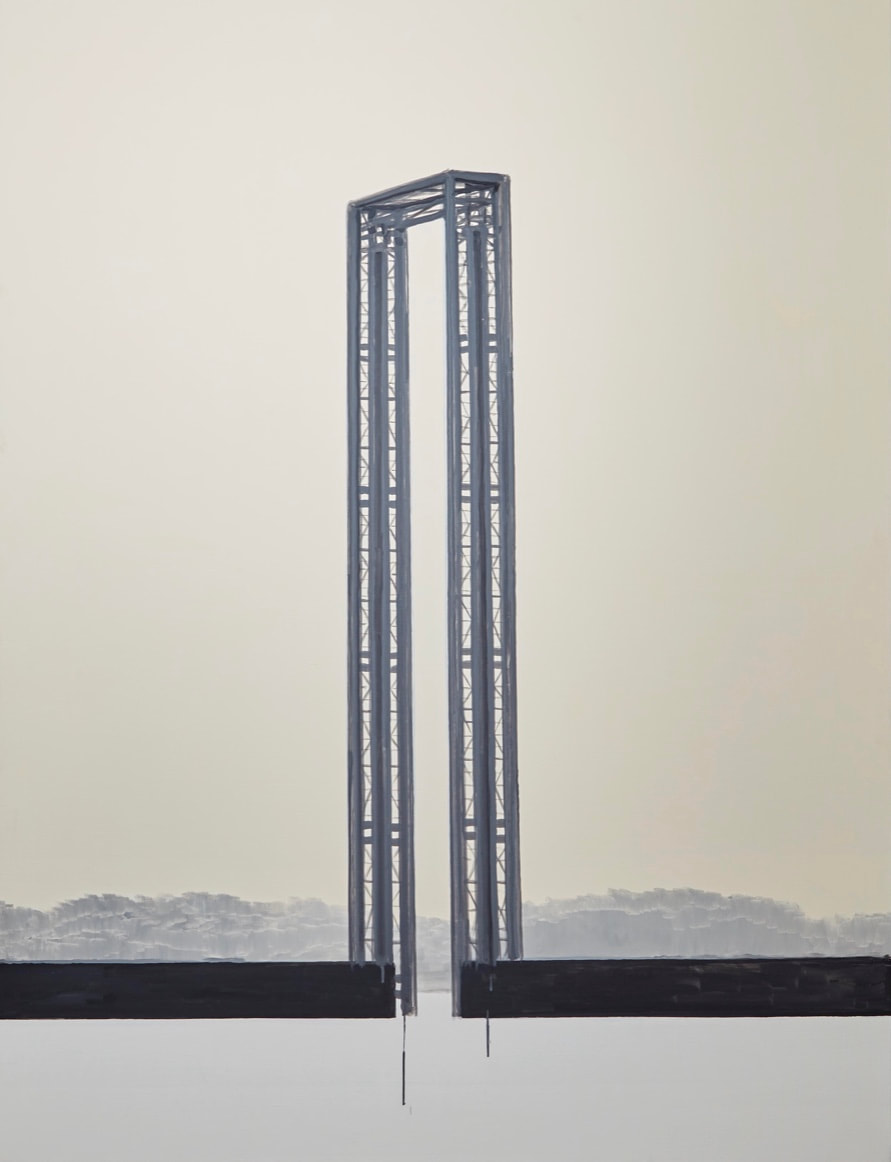
Marco Neri
(Italian, born in 1968)
Marco Neri's work is deeply rooted in the art of painting. His tempera on canvas can not attract the viewer because of vivid colors or expansive brushstrokes. Indeed, his color palette ranges from white to black, passing through a drab creme and different tones of gray. An almost indiscernible tremble in his drawing, lovely defined by the artist as the consequence of the heart's beat on the wrist fine movements, is another feature of his paintings, which eventually stand as a marvelous example of elementary and unconventional beauty, made of simple ingredients.
(Italian, born in 1968)
Marco Neri's work is deeply rooted in the art of painting. His tempera on canvas can not attract the viewer because of vivid colors or expansive brushstrokes. Indeed, his color palette ranges from white to black, passing through a drab creme and different tones of gray. An almost indiscernible tremble in his drawing, lovely defined by the artist as the consequence of the heart's beat on the wrist fine movements, is another feature of his paintings, which eventually stand as a marvelous example of elementary and unconventional beauty, made of simple ingredients.
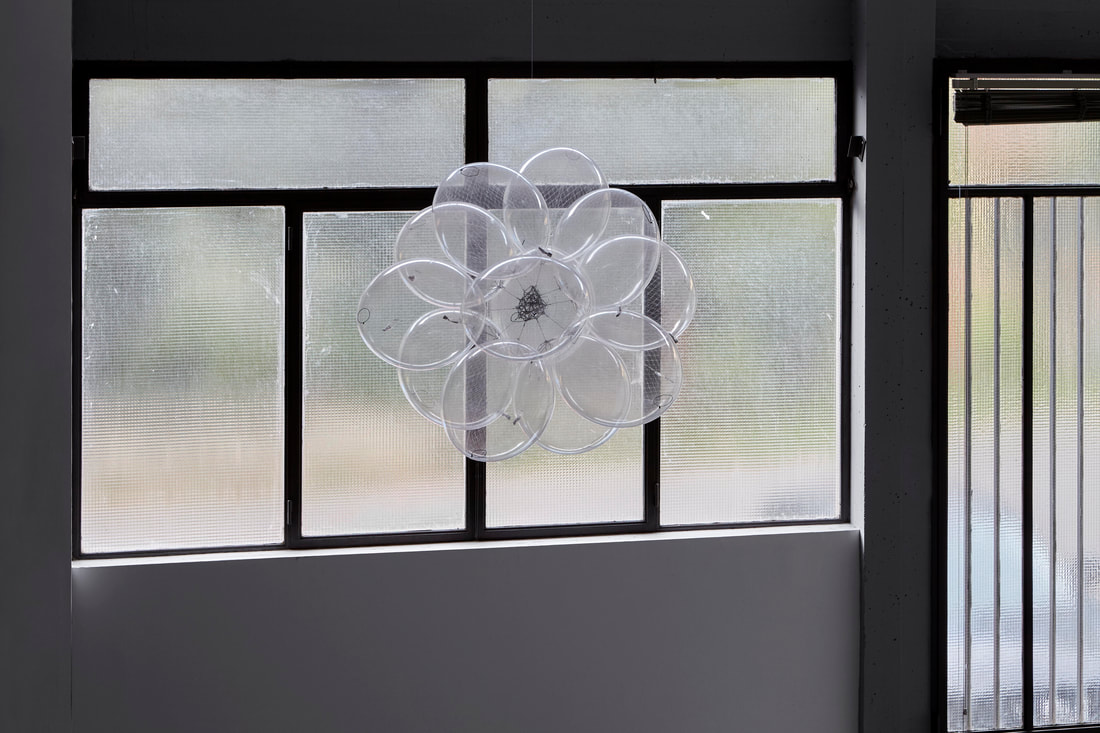
Tomas Saraceno
(Argentine, born in 1973)
His work focuses on living respectfully in our planet by taking into consideration the planet's health as well as its integrity. The artist has consistently created works indicating an alternative and eco-friendly way to live our own lives while fostering human beings' development. In many of his installations and sculptures, spiders are presented as virtuous examples of how living in harmony with the planet is entirely feasible. Spider webs are brought to our attention as living architectures and assemblages created in full harmony with the planet's resources and they may actually represent a remarkable case of building houses and infrastructures keeping well in mind the integrity of our natural environments. Tomas Saraceno's research puts in close dialogue art and science by combining a world's poetic vision with innovative scientific findings.
(Argentine, born in 1973)
His work focuses on living respectfully in our planet by taking into consideration the planet's health as well as its integrity. The artist has consistently created works indicating an alternative and eco-friendly way to live our own lives while fostering human beings' development. In many of his installations and sculptures, spiders are presented as virtuous examples of how living in harmony with the planet is entirely feasible. Spider webs are brought to our attention as living architectures and assemblages created in full harmony with the planet's resources and they may actually represent a remarkable case of building houses and infrastructures keeping well in mind the integrity of our natural environments. Tomas Saraceno's research puts in close dialogue art and science by combining a world's poetic vision with innovative scientific findings.
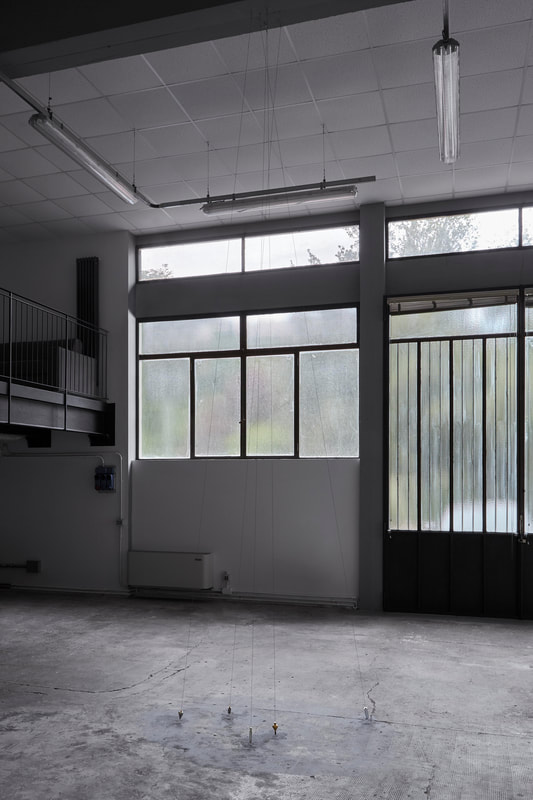
Tatiana Trouvé
(French, born in 1968)
The sculptures and installations by Tatiana Trouvé mostly start from real objects undergoing a radical transformation. They find a new materiality and eventually the observer tends to lose familiarity with the original object. New "creatures" stand in front of us asking for a sensible and irrational approach to them. The artist's work has to be installed and exhibited properly because it interacts closely with the surrounding area as well as with the exhibition space architecture. With this attitude in mind, the view of Tatiana Trouvé's work may recall concepts linked to time and space and eventually to a deep sense of infinity made of a multitude of different worlds.
(French, born in 1968)
The sculptures and installations by Tatiana Trouvé mostly start from real objects undergoing a radical transformation. They find a new materiality and eventually the observer tends to lose familiarity with the original object. New "creatures" stand in front of us asking for a sensible and irrational approach to them. The artist's work has to be installed and exhibited properly because it interacts closely with the surrounding area as well as with the exhibition space architecture. With this attitude in mind, the view of Tatiana Trouvé's work may recall concepts linked to time and space and eventually to a deep sense of infinity made of a multitude of different worlds.
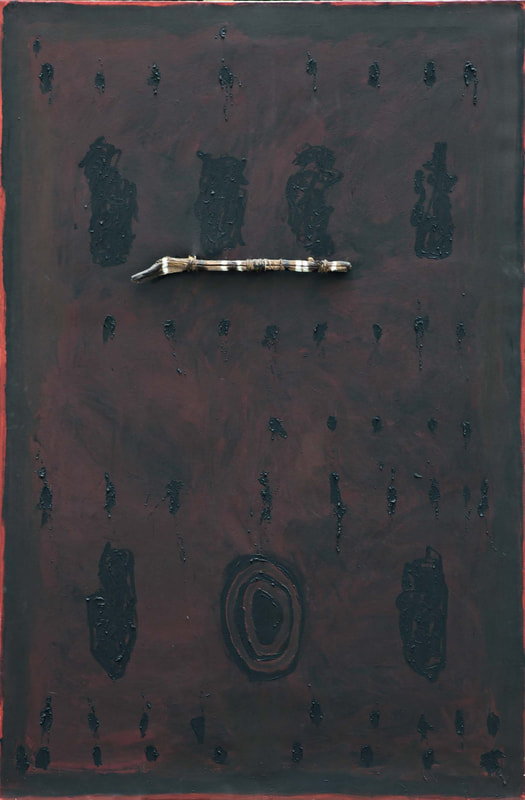
Ouattara Watts
(Afro-American, born in 1957)
The work by Ouattara Watts has impressed us because it is made of a universal pictorial language where we see a successful fusion of African and Western painting. The final result is not at all artificial, it comes spontaneously from an artist who has been exposed to art in a truly global context. His paintings teach us that art is borderless and that openness to new languages may be key for a passionate collector. Labels to art movements or to artists according to their provenance may sometimes lead to misunderstandings or to easy conclusions, while we feel that being attracted by the complex granularity of an artist's work is still one of the most pleasant challenges for enthusiastic collectors.
(Afro-American, born in 1957)
The work by Ouattara Watts has impressed us because it is made of a universal pictorial language where we see a successful fusion of African and Western painting. The final result is not at all artificial, it comes spontaneously from an artist who has been exposed to art in a truly global context. His paintings teach us that art is borderless and that openness to new languages may be key for a passionate collector. Labels to art movements or to artists according to their provenance may sometimes lead to misunderstandings or to easy conclusions, while we feel that being attracted by the complex granularity of an artist's work is still one of the most pleasant challenges for enthusiastic collectors.
We Would Love to Have You Visit Soon !
Email : [email protected]
Instagram : theplaceartcollection
Twitter : @ThePlaceArt
